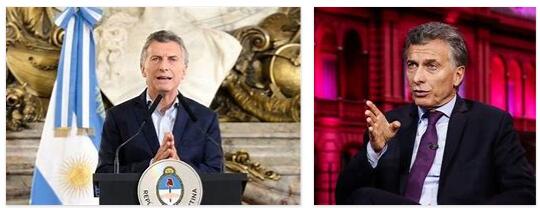Democratization (1912-1930) and the Notorious Decade
Many presidents in the 19th and early 20th centuries ruled dictatorially and supported the rich landowners. Indians and immigrants did not even have the right to vote. It was not until 1912 that Roque Sáenz Peña introduced universal suffrage, after political opponents had strongly urged it. From 1916 to 1930, a party other than the conservative PAN ruled for the first time, namely the UCR. During this time Hipólito Yrigoyen was President of Argentina twice.
In 1930 a military coup overthrew the government of Hipólito Yrigoyen. For the next ten years there was repeated election fraud. That is why the thirties are also called the “Notorious Decade”. During this time, industrialization began. Argentina initially remained neutral during World War II, but supported the Allies at the end of the war.
Juan Perón (1946-1955)
The name Perón is inseparable from the history of Argentina. Juan Perón had made a career in the military, became increasingly active in politics and was elected president in 1946 and re-elected in 1951. He founded a political movement that is named after him Peronism. Perón and his party, the Justizialist Party (Partido Justicialista), saw their politics and ideology as the “third way between communism and capitalism”.
His wife Evita Perón had a great influence. The young actress was politically involved. In 1947, Argentine women were granted the right to vote. Evita Perón died of cancer in 1952 at the age of only 33. The 1978 musical “Evita” tells the story of her life. The song “Don’t cry for me Argentina” is world famous.
Perón sympathized with fascism and so many National Socialists found refuge in Argentina after the Second World War, including Adolf Eichmann and Josef Mengele. Perón’s power relied in particular on the working class. He introduced the 8-hour day and the Christmas bonus. Industries were nationalized. However, these measures were not economically successful. The inflation was high and the landowners had Perón against him because he stood up for the workers. Perón was overthrown in September 1955.
Years of Crisis and Return of Perón (1955-1976)
Perón went into exile, where he met a woman in Spain and married her: Isabel Perón was her name after the marriage. In Argentina, the governments changed frequently, and there were always military coups. In 1966, a right-wing and anti-peronist military dictatorship was established by Juan Carlos Onganía. The economy was bad and social tensions grew. It formed guerrilla groups who committed numerous terrorist attacks and the country continues plunged into crisis.
When the Peróns party won the 1973 elections, Perón returned and was elected in new elections in September. But he could not change the tense situation and drove a tough course against all opponents himself. The Alianza Anticomunista Argentina (AAA) was founded. She kidnapped and murdered political opponents and made them “disappear”. Perón died in July 1974. His wife Isabel took over, but was overwhelmed by it. She was overthrown by the military.
The military dictatorship (1976-1983)
A military junta took power in 1976. But the terror continued, except that the military and police officers took over the tasks of the AAA. Around 30,000 people “disappeared” during this period of military dictatorship.
The mothers who met every Thursday in front of the government building in Buenos Aires on the Plaza de Mayo from 1977 onwards became known. Dressed in white headscarves, they quietly protested against the disappearance of their children, even though that put them in danger themselves.
Disappearance
This is what it is called when people are arrested or kidnapped by the state and the relatives are not told anything about their whereabouts. The victims are held captive, tortured and murdered. Those who disappeared in this way are called “Desaparecidos” in Spanish.
Political opponents who were not immediately murdered were put in secret prisons, where they were often held for months or years. Children born in secret prisons were taken from their mothers and given up for adoption by officers loyal to the regime. During the time of the military dictatorship, many Argentines went into exile to avoid repression.
Economically, too, the hoped-for successes did not materialize. In 1982 Argentina occupied the British Falkland Islands. It came to the Falklands War, which Great Britain won in 1983. The defeat led to the overthrow of the military government in Argentina. After violent demonstrations, President Galtieri resigned.
Return to Democracy (1983)
In 1983 there were free elections for the first time, which the UCR won with Raúl Alfonsin. In 1989 he had to resign because of a severe economic crisis.
The Peronist Party came back to power with Carlos Menem, but reoriented itself politically. Argentina recovered economically, but in 1998 there was another serious crisis and Menem had to resign. In 1999 the UCR again appointed the president, but could not solve the economic problems. In 2003, Néstor Kirchner, another Peronist candidate, came to power. Under him, the economy experienced a strong boom.
Cristina Fernández de Kirchner
Néstor Kirchner did not run for president again. His wife Cristina ran for him in 2007. In 2011 she was re-elected.
President of Argentina
In 2015, Mauricio Macri became the new President of Argentina. He belongs to the conservative Propuesta Republicana party. To get more information on Argentina and South America, check relationshipsplus.
Alberto Ángel Fernández became the new President in 2019. He belongs to the electoral alliance Frente de Todos.
